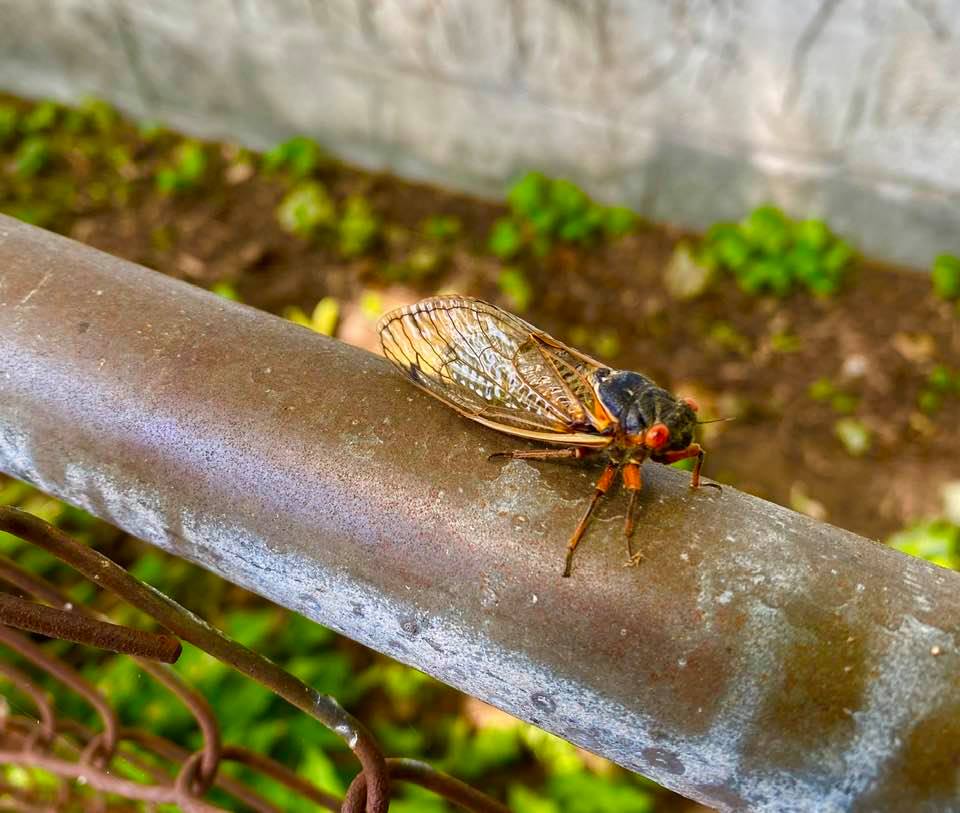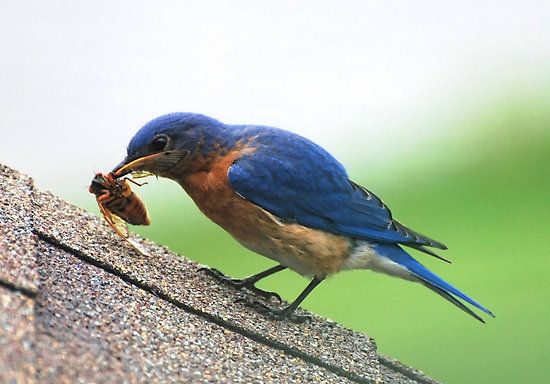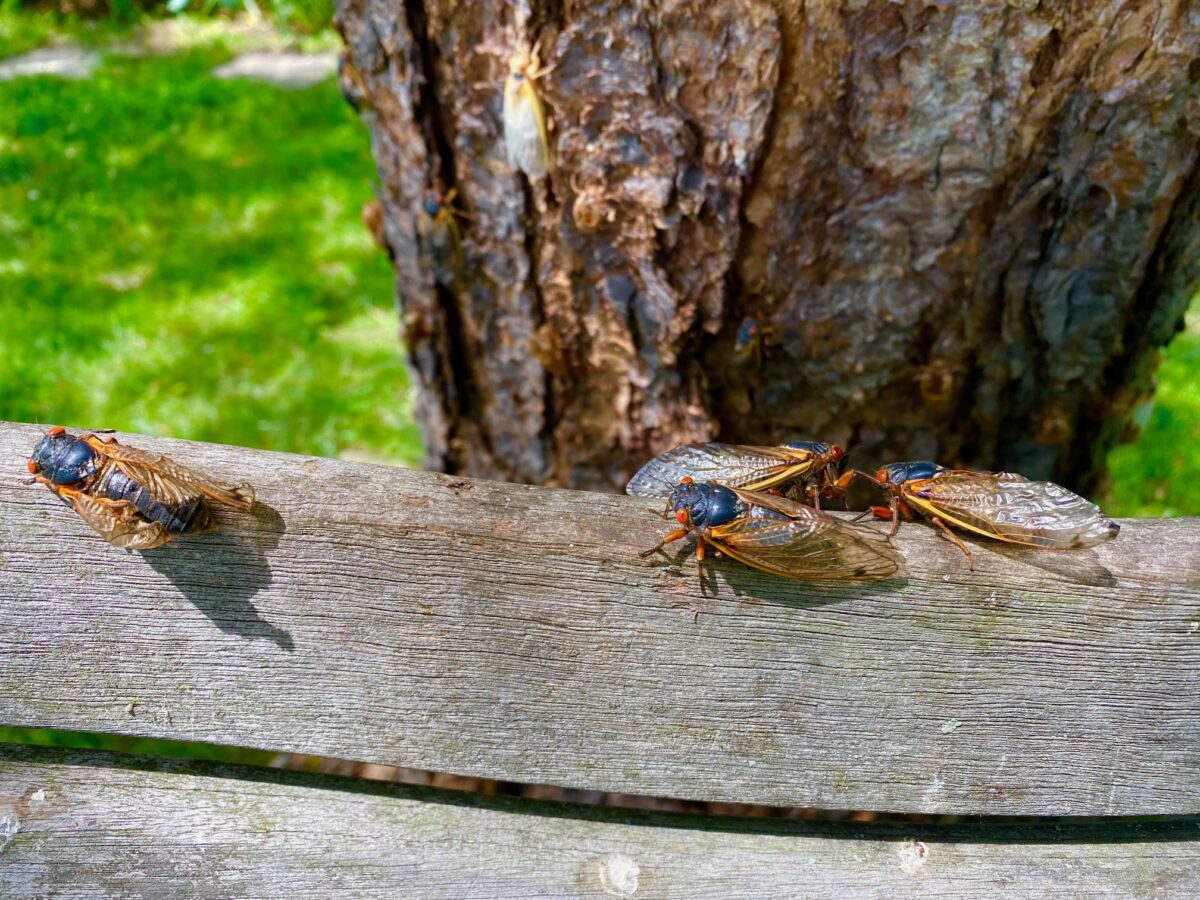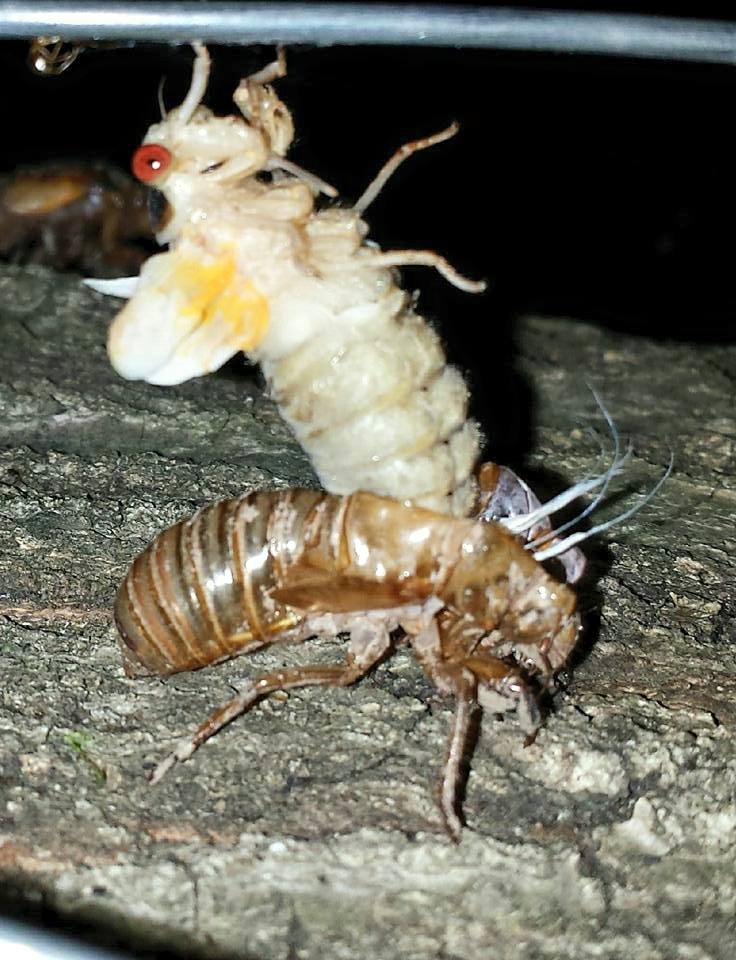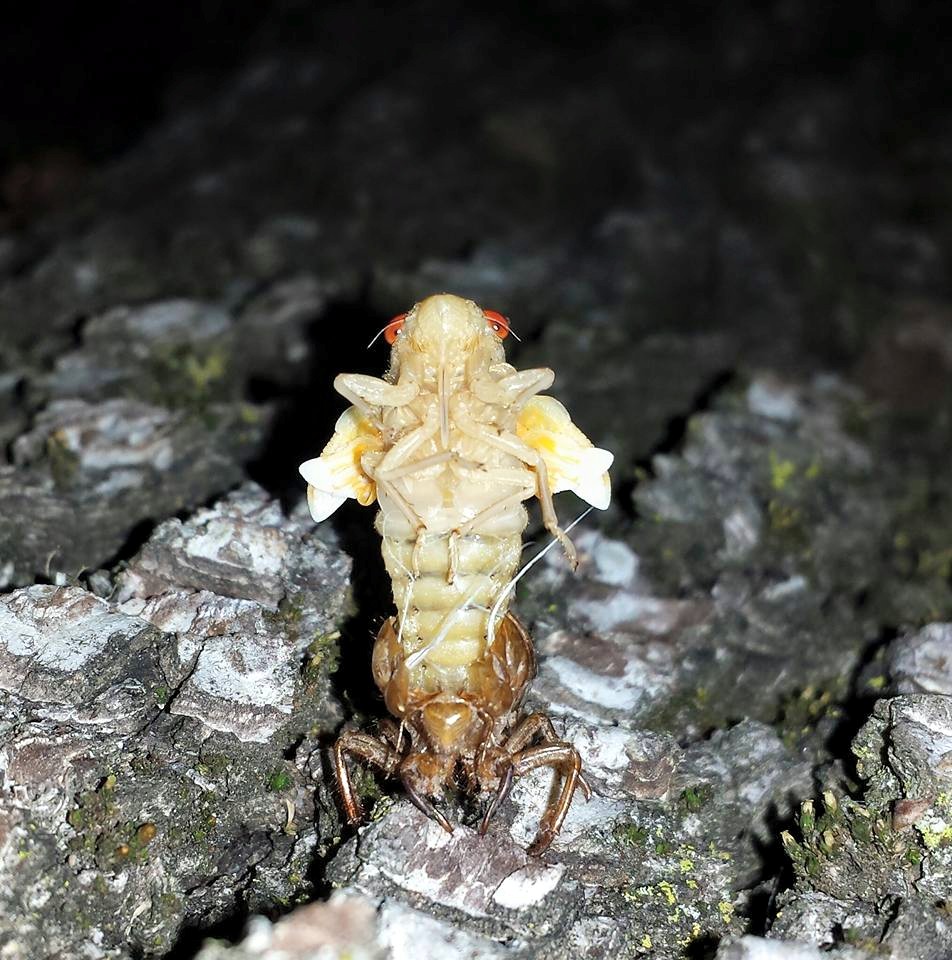By Glynn Wilson –
WASHINGTON, D.C. – It must have seemed like a Biblical plague of locusts in May, 1715, when the Reverend Andreas Sandel of Philadelphia’s “Gloria Dei” Swedish Lutheran Church first described the emergence of billions of brown and black cicadas with bugged-out red eyes.
But in 1732, botanist John Bartram wrote a letter describing the science behind the cyclical return of what came to be known as the Brood X or brood 10 cicadas, which emerge from holes in the ground and invade the trees along the East Coast. He was the first scientist to detail the insect’s insertion of their eggs into the small branches of trees around Philadelphia. Bartram was so taken with the phenomenon that he later recorded it in greater detail in two manuscripts about the emergence in May 1749.
Range
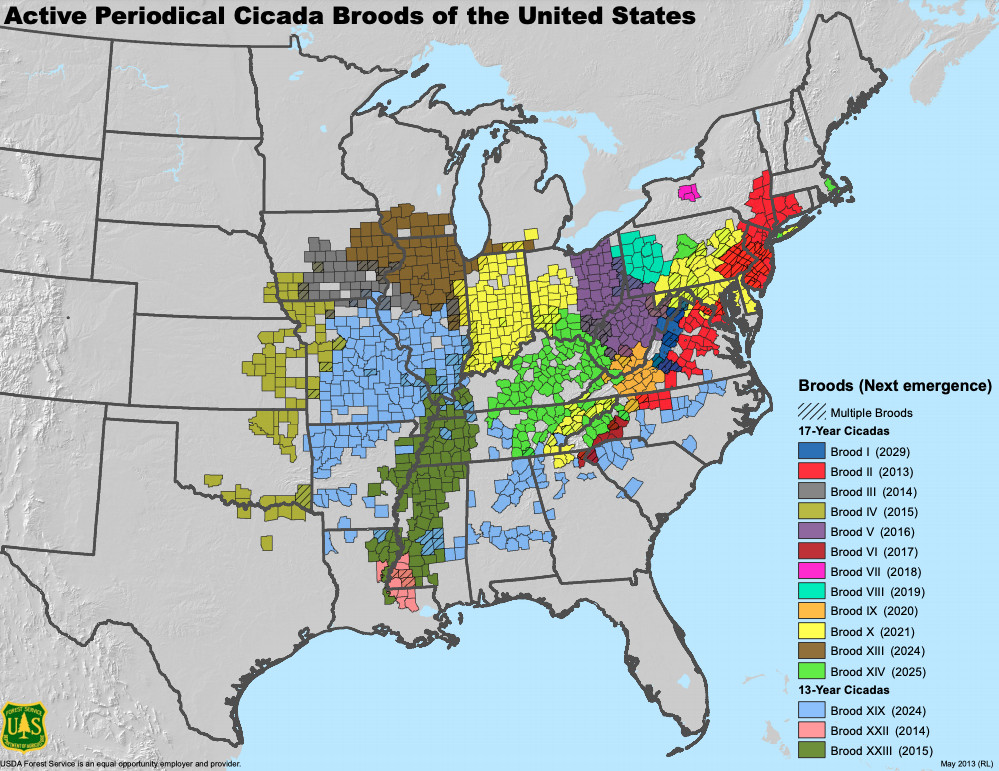
The Brood X cicadas, depicted in yellow, range from North Georgia and East Tennessee to Northeast Virginia, Washington, D.C. and Maryland into Pennsylvania, and they show up all over Indiana and Illinois too: USFS
The first I heard of it came in The Washington Post back in 2004, when I was living in an apartment in Alexandria, Virginia and commuting to work on the Metro at States News Service in Washington at a great little news room on Pennsylvania Avenue, two blocks from the White House.
The second floor apartment had a small balcony where I often sat in the late afternoon sipping a beer and having a smoke, watching the mourning doves work on their nests and protect their baby birds in hanging flower baskets. By the height of the natural event in late May, I remember seeing the biggest, fattest American robins and mocking birds I had ever seen. The cicadas created a once in a 17-year free feast for the birds. The cardinals, blue jays and blue birds got so fat they could barely walk, much less fly.
I’m going to try to get pictures and videos of this in the next few days.
At first I thought the robins and mocking birds were just bigger in Virginia than the ones I grew up watching in Alabama and other parts of the Deep South. But over the four weeks with the billions of cicadas screaming in the trees, it became apparent their size was dietary and based on a 17-year cycle of nature. These cicadas are also not green like the ones we have in lesser numbers in Alabama.
So far the cicadas are just descending on the yards around the Washington Metro Area, and the screaming has not yet begun. But as soon as the heat and humidity rise to a certain level, the noise will be so great that it will drown out the constant hum of traffic noise in the city and the suburbs from the Beltway.
There are lots of descriptions of the science all over the web. But my Facebook friend Ginger Brown, a resident of Greenbelt, Maryland, described it best in the comments.
“They all come up in a brown (hasmat suit). They then climb a tree and shed the brown suit and become a white winged albino,” she said. “Slowly they get their color and their annoyingly loud voice. They call and call until they find a mate. They mate and lay eggs in the ground. The eggs hatch and burrow for 17 years. They emerge into the ‘whole new world” above ground. They shed their shell and develop wings. They clumsily climb the tree to mate. They drop down and plant their offspring into the ground below the tree. The offspring tunnel land actually help our earth for 17 years. Then they emerge to start over…”
The Washington Post, known more for its political and investigative reporting than its science coverage or feature writing, is having some fun covering the event, a welcome distraction from the constant game of politics. Reporters there found experts to say that at the height of the cicada invasion this year there will be about a million cicadas per acre, 25 or 30 per square foot.
Related: What is Brood X? When do cicadas come out in 2021? Answering your buggiest questions.
Researchers at Mount St. Joseph University in Ohio are mapping this year’s crop, and they’ve created a cellphone app so people can document cicada sightings where they live.
The 2021 crop of the bugs hatched in small tree branches in 2004 as tiny, translucent nymphs, each about the size of a grain of rice. They dropped to the ground and burrowed below, sucking liquid from plant roots, and molting and growing.
After 17 years, the much larger nymphs crawl out of dime-size holes in the ground. They immediately climb a vertical surface, where they will molt one last time, breaking out of their brown exoskeletons as soft, white adults.
The largest are more than an inch long. Within hours, they have full color, and a few days later, they are able to fly.
Adult cicadas live above ground for two to four weeks and spend nearly all their time eating and trying to mate.
Side Effects
Which brings up another side effect of the invasion I also witnessed in 2004. At one point the air was so thick with cicada love juices that it hung like a fog and smelled like sperm. Some of the smell could also have been all the dead ones piled up on the ground, an odor some people have described as similar to dead shrimp. People with allergies developed asthma from breathing the air, including me.
So if you are in range of the invasion, you might want to stock up on Benadryl and asthma medication.
As for the cicada’s unnerving song, only the males can sing, scientist say, using membranes called tymbals. Their hollow abdomens amplify the call, “but some of the details are still a mystery,” according to The Post.
Their chorus can reach 105 decibels, scientists report, louder than a lawn mower.
Like every other species in nature, cicadas have their survival strategy, a strategy of mass numbers. Scientists call it the predator-satiation defense.
It means they simply “overwhelm the predators by filling their bellies, and there’s still enough left over to perpetuate the species,” said Michael Raupp, an entomologist at the University of Maryland. There just aren’t enough predators to swallow them all before they reproduce.
Cicadas get all their nutrients from tree xylem, a very watery sap that contains minerals and amino acids.
Some insects people call bugs are not really bugs. But it is OK to call a cicada a bug. Cicadas are true bugs because of the way they eat. They suck food through strawlike beaks called rostrums.
While underground, cicada nymphs poke their beaks into the tender roots of grasses and trees. After they emerge, they use those beaks to tap tree branches. The xylem hydrates and cools them in addition to providing nutrients.
“All that liquid needs somewhere to go,” The Post reports, “so if you plan to spend a lot of time under cicada-filled trees, you may want to wear a hat to keep ‘cicada rain’ off your head.”
Yes, look out for the cicada rain. Sounds like a subject for a Frank Zappa song.
More Photos


